
CAPING 101 with Ray Wiens
For those of us fortunate enough to live and hunt in the Western portions of Canada and the United States we are afforded many amazing hunting opportunities. My home province of British Columbia, especially, allows us to take to the wilderness in search of an amazing variety of game. Mule deer, moose, elk, caribou, four sub species of mountain sheep, mountain goat, and black and grizzly bear are all available to hunt in this great Province I call home. The remoteness of the country combined with the opportunity to chase this variety of game is second to none.
However, to access many of the areas these animals inhabit means travelling deep into the mountains where very few people have ever set foot. And although this represents a large part of the appeal of mountain or wilderness hunting it comes with numerous “logistical” challenges. Many non-hunters have a simplified view of what’s involved with a true backcountry hunting trip and can’t fully grasp the extent of the planning and work required to come home with an animal. From field dressing to meat care, caping and skinning, as many will say “the real work” starts after the kill.
One of the biggest challenges for many hunters is dealing with the skinning and preservation of capes, especially on an extended backcountry hunt. Mountain hunts are not easy. We are more often than not required to go the extra mile to access our planned hunting area by means of backpacking, packtrain, float plane or jet boat, and we often find ourselves at least a day or more away from civilization. Far away from freezers or friends who know how to look after the hard earned animal you were after. If you are planning on preserving the cape and hide for some form of mount it is imperative to inform yourself on what you’ll need and how to properly care for your animal in these types of situations. Over the next few paragraphs, I’m going to go over what I feel are the essential skinning and caping tools and techniques.
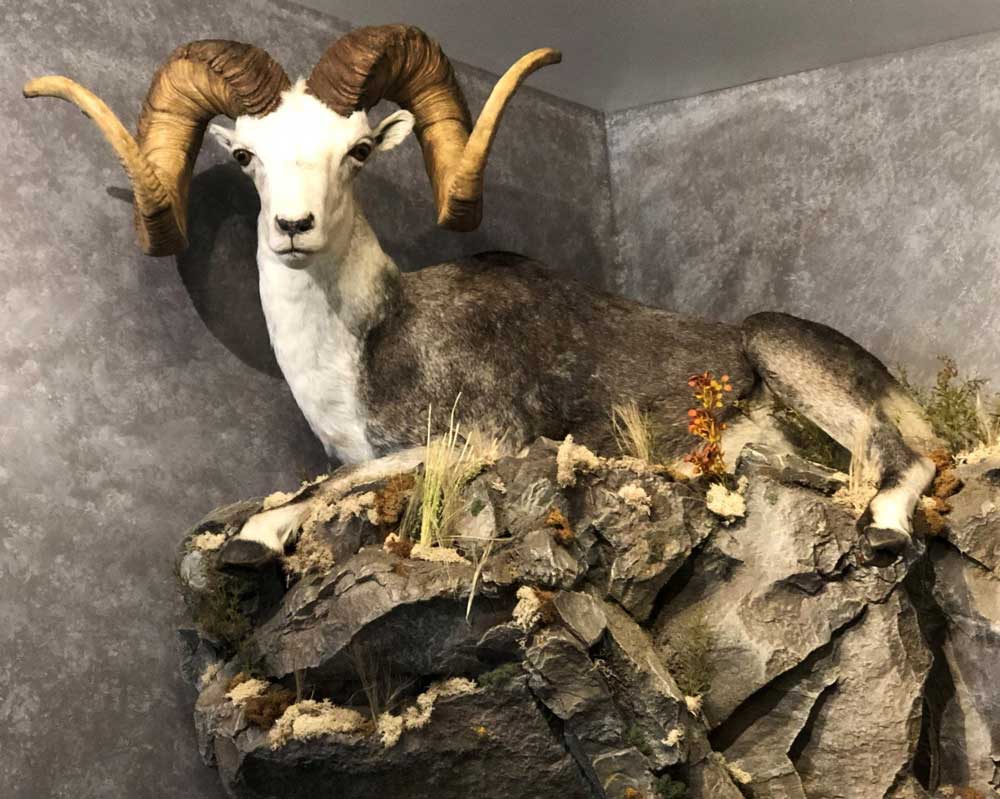
To me, taxidermy is not about preserving a “trophy”. It is a memory, an accomplishment, a symbol and reminder of the hunt, the difficulties overcome, the people I was with and the country we were fortunate enough to experience. It is also a way to respect and preserve the beauty of the animals we chase.
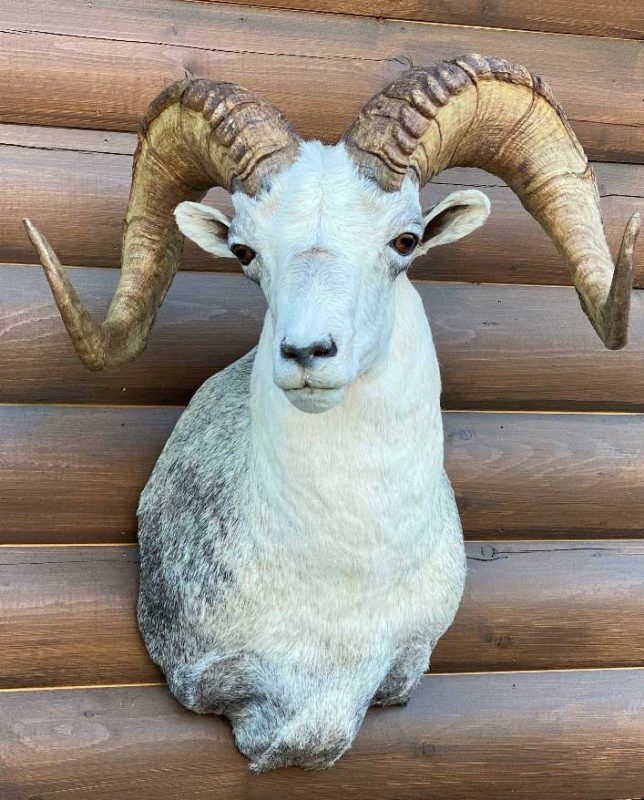
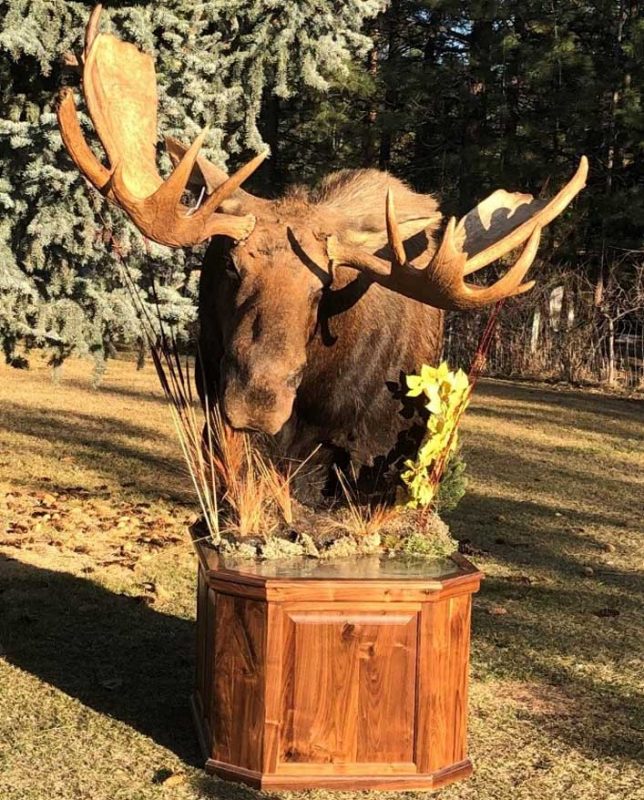
To ensure you end up with the most representative mount, proper “in the field” care of the animal’s hide is absolutely essential. As a taxidermist, caping is the first thing I do in the field. The meat is always important, however, I like to take the shoulder or life-size cape off of the animal before gutting or boning out the meat. This way the incisions you make to field dress the animal won’t compromise the quality of the cape and the meat can still be promptly taken care of with no risk of spoilage. There are only a few items needed for field care and when on a backpack hunt especially keeping gear and tools to a minimum is important. Generally speaking, my caping kit only includes a scalpel handle and a few spare blades. I keep my salt at base camp unless I know I’m going to be more than a couple days away from base camp or I’m anticipating warm weather. In this case I pack a 1L plastic bottle of fine salt. Once the animal is down, the pictures are taken and your heart rate finally starts to normalize, the real work begins. The key here is to know exactly what you want! There are several options for mounts and knowing which specific one you want will dictate where you cut.
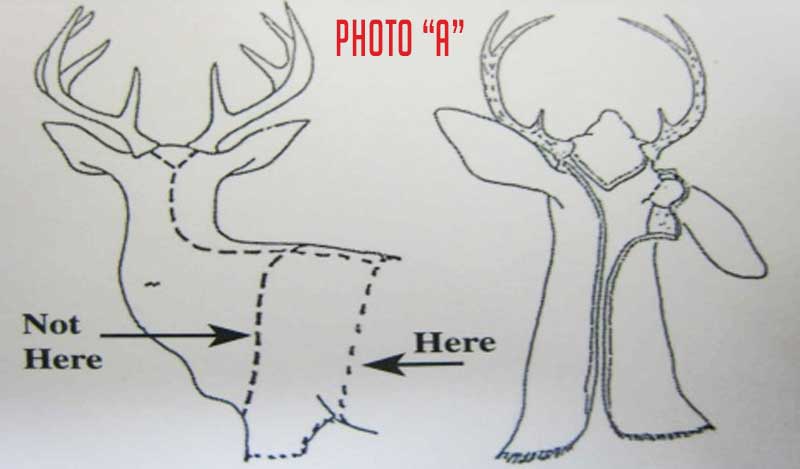
There’s the standard shoulder mount, for this mount cuts can be made down the back to fully behind the shoulder, around the shoulder and part of the front legs (A).
Pedestal mounts are similar to a shoulder mount but more cape is needed to cut the cape back to mid-belly or even further.
Then there are rugs or life-size mounts which should be skinned with either a ventral incision (B) or a dorsal incision (C). For dorsal skinning, make your cut from the back of the animals head, down the spine to the base of the tail. Note the incision lines in the photo labeled “B”. I recommend for a rug to start your incisions from the heel of each paw to ensure the correct line. Cutting to the top of the foot is probably the most common error I see on bear rugs. Ventral incisions are fairly common and when in doubt, use this method.
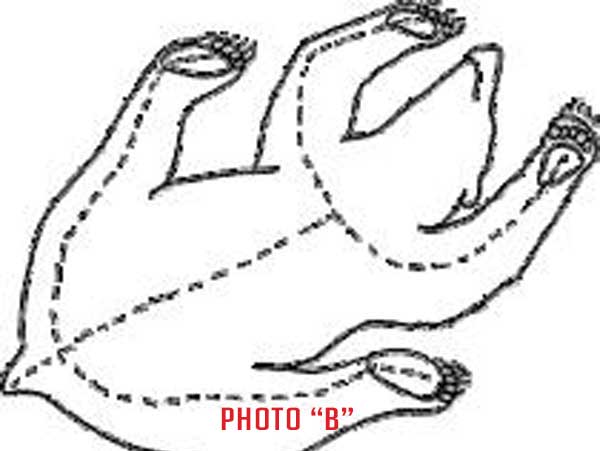
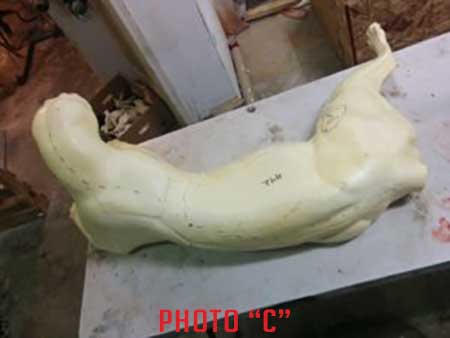
For dorsal skinning, make your cut from the back of the animals head, down the spine to the base of the tail. Begin skinning the hide off of the animal and work your way down to the legs. Once you are part way down “tubing” the legs out, a relief cut can be made on the back of each leg to help finish skinning the hide off. There are benefits to both the ventral and dorsal skinning methods and the one you utilize is dependent on the species involved, desired position of the final mount, and your taxidermist’s preference. It’s always a good idea to call your taxidermist ahead and discuss your hopeful caping priorities. If you don’t know specifically the type of mount you want the best option is to skin the whole animal out with a ventral incision. During the initial skinning process, I remove the hide up to the head and feet and then detach these from the carcass so I can finish skinning and caping out afterward at camp.
Caping out the head intimidates a lot of hunters. I always recommend people attempt to cape out an animal that they have no intention of turning into a mount prior to shooting their ram or another trophy of a lifetime but sometimes that isn’t an option. It obviously isn’t ideal to learn to cape in these memorable situations but when it’s the early season and weather is warm or you’re going to be stuck in the mountains for days it’s better to try than to let the cape spoil. It’s much easier to fix a small hole or two than to replace an entire cape or repair a spoiled section of hide. Caping out the head refers to removing the skull from the hide and includes, “turning” the ears and splitting the nose and ears. I get many capes through my shop every year that have been skinned out nicely but without the ears properly turned. The ears are just as susceptible to spoilage and need to be turned inside out in order for the salt to take effect. A properly preserved cape with bald slipped ears doesn’t make for the best mount. (Slippage = losing hair in patches due to bacteria, often not visible until the cape is in the tanning process) When skinning out a head just remember to take your time, use a sharp blade and cut the connective tissue towards the skull not towards the skin. The first challenge you will encounter will be to free the ears from the skull. Feel for the base of the ear where the ear canal is below the skin and cut through the ear butt muscle and ear canal cartilage (D&E).
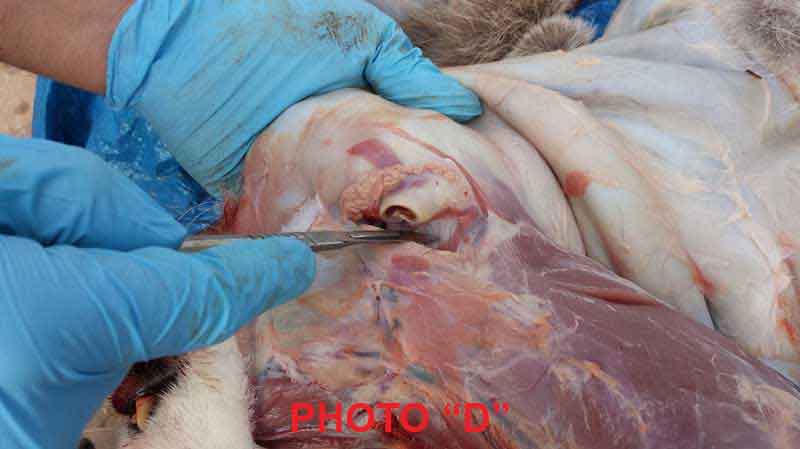
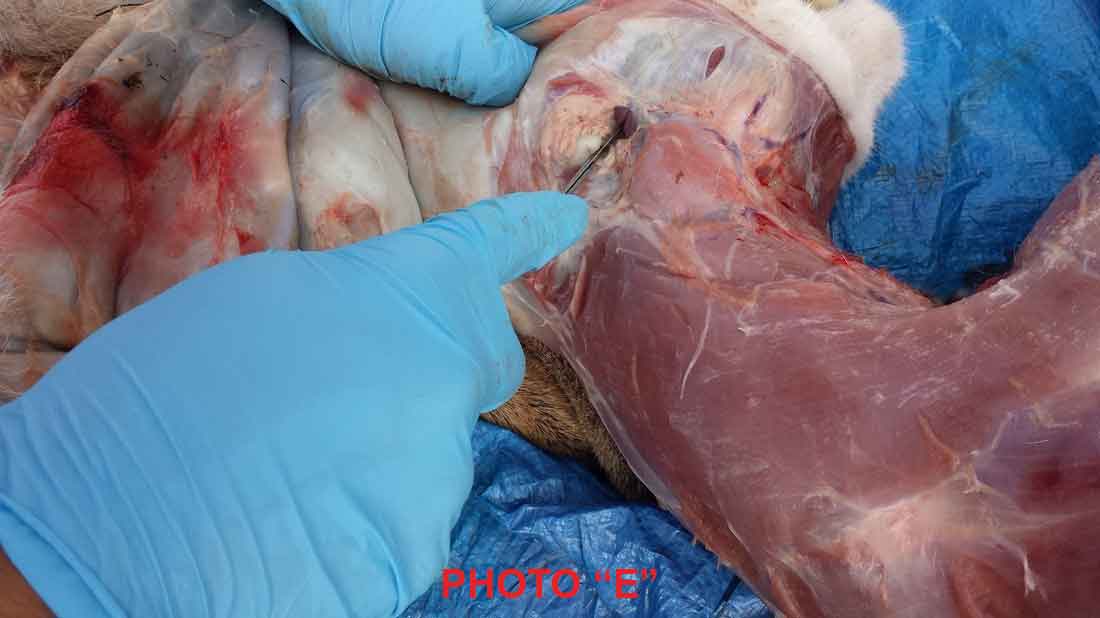
Next, you will come upon the horns or antlers — unless it’s a predator species — for sheep, goats and other horned animals the hairline and horn blend into each other. Make a cut around the horn just above the hairline then proceed to skin from underneath the skin towards that cut freeing the skin from the horn. With antlered animals, I skin from underneath the hide, up the pedicle and pry the skin off of the base of the antler (F&G).
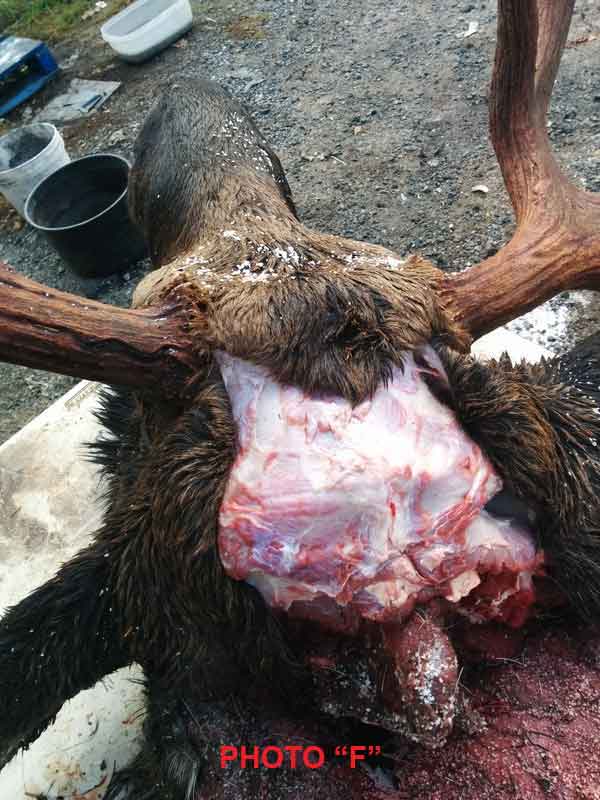
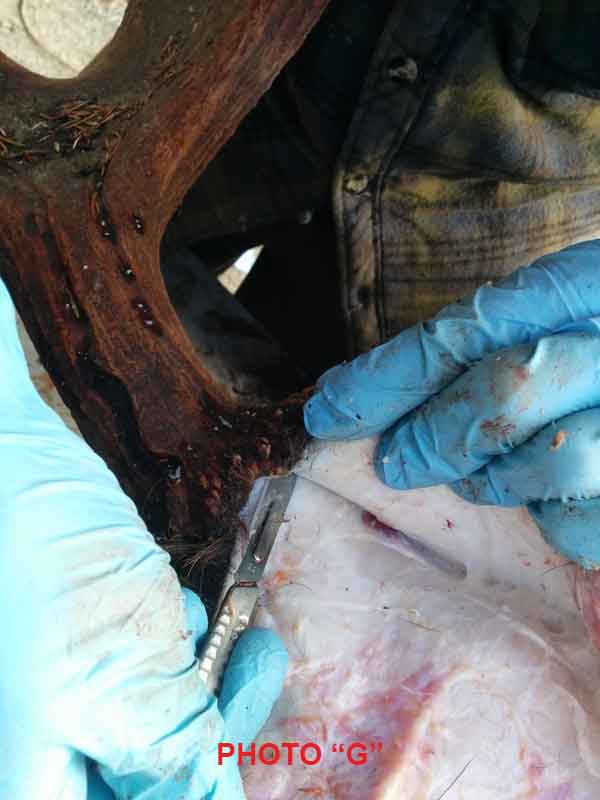
Once you’re past the animal’s headgear skin carefully towards the eyes and lips. When you get close to the eyelids, keep checking the hair side of the specimen. I like to pinch the eyelid with my other hand and pull it away from the skull, this way you can clearly see where the eyelid is and cut through the membrane connecting the eyelid to the skull (H&I). Carefully free the entire lid from the eye orbital. Also, take care when skinning off the lachrymal gland (tear duct).
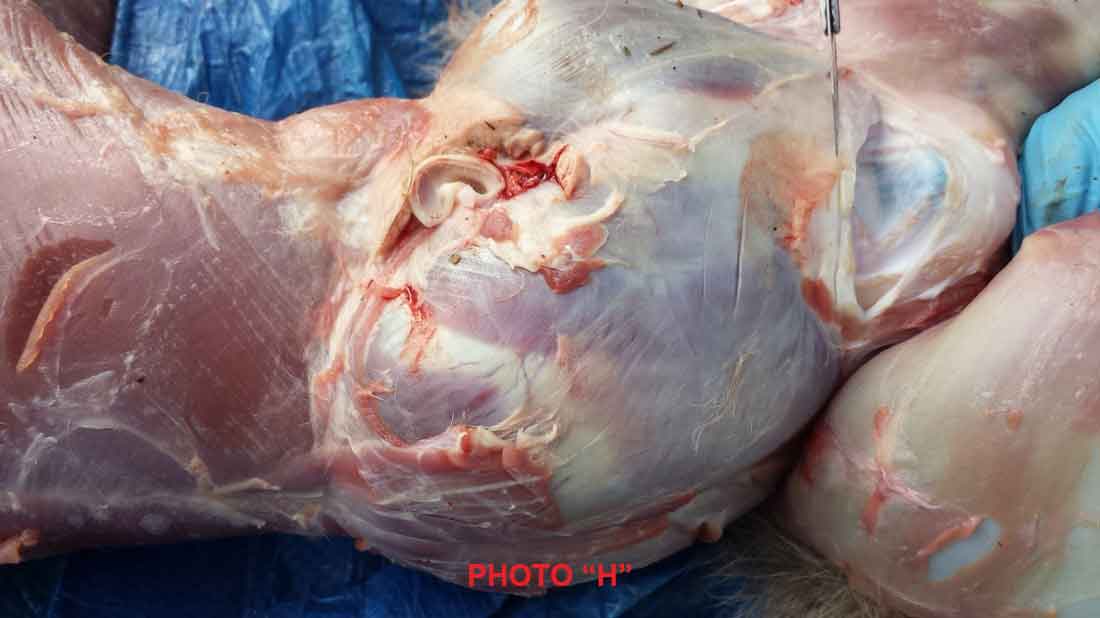
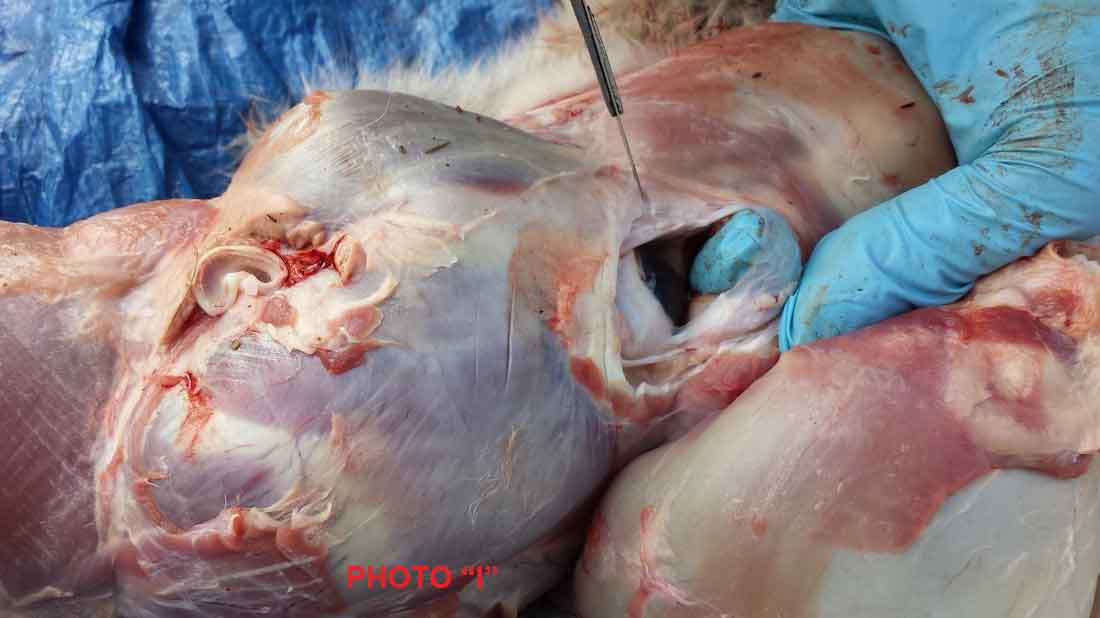
At the corner of the mouth at least a half-inch from the corner lip line, you will need to cut through the muscle and lip tissue towards the jaw bone. Follow the lip line and cut where it connects to the upper and lower jaw bone.
As you skin the muzzle forward, peel the skin down towards the nose to within one inch or so of the nose pad. Here you will cut through the nasal cartilage towards the lips. After this point, the hide should be free from the skull (J&K).
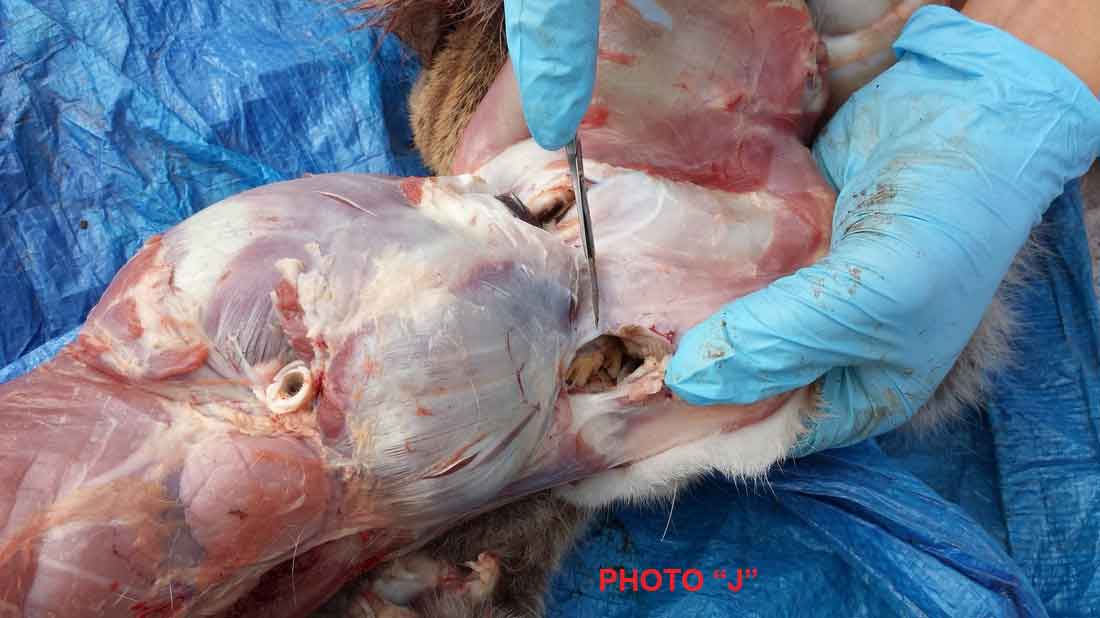
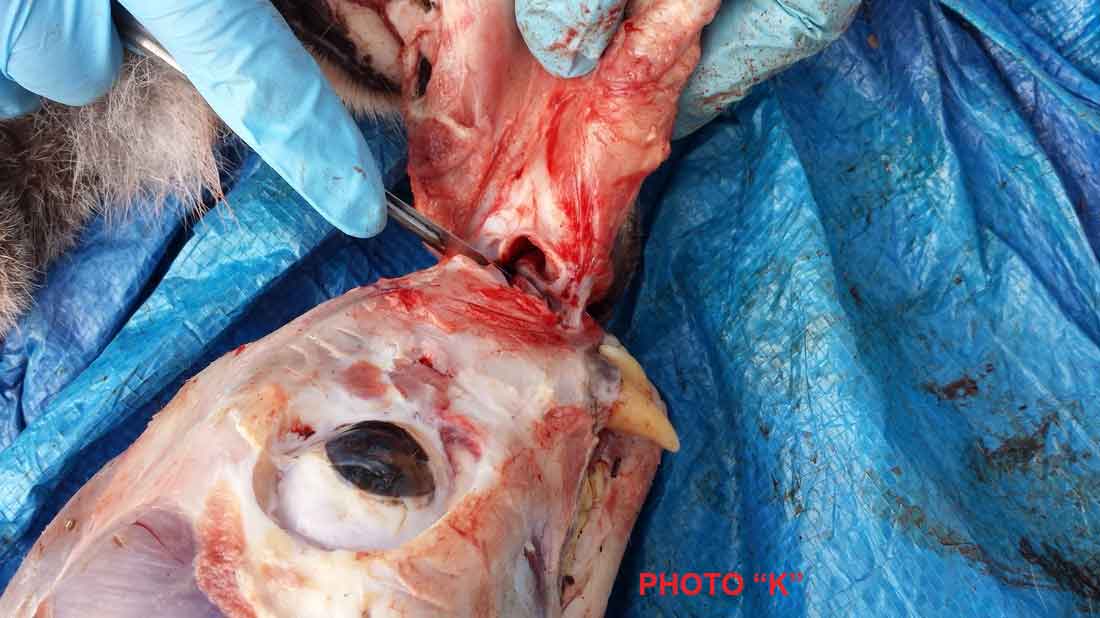
Once the hide is free I begin “splitting the lips”. This simply refers to filleting the lip open all the way around the mouth. When salting a hide fine salt can penetrate up to a quarter-inch so keep this in mind when doing all the finer detail skinning. The purpose of splitting the lips is to simply get salt to penetrate right to the lip line so remember the quarter-inch rule, you don’t need to be any more precise than this (L&M).
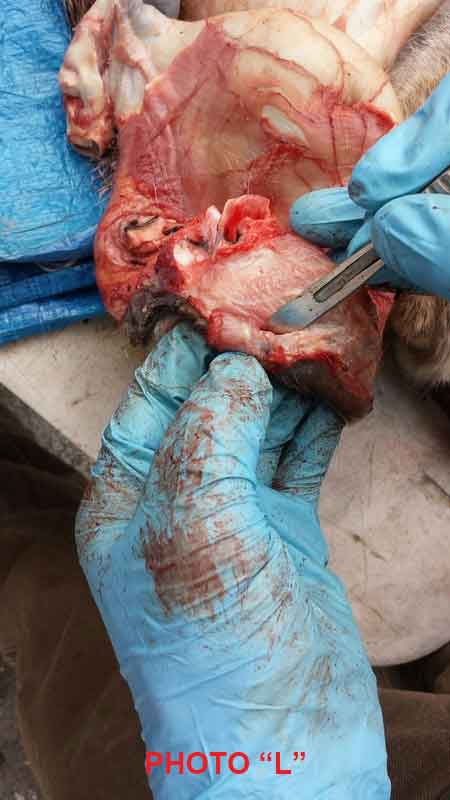

Next, split the nose cartilage open. After I’ve skinned around the nose as far as I feel comfortable, I take my knife and carefully cut through the septum splitting it open right up to the inner nose pad (N&O).
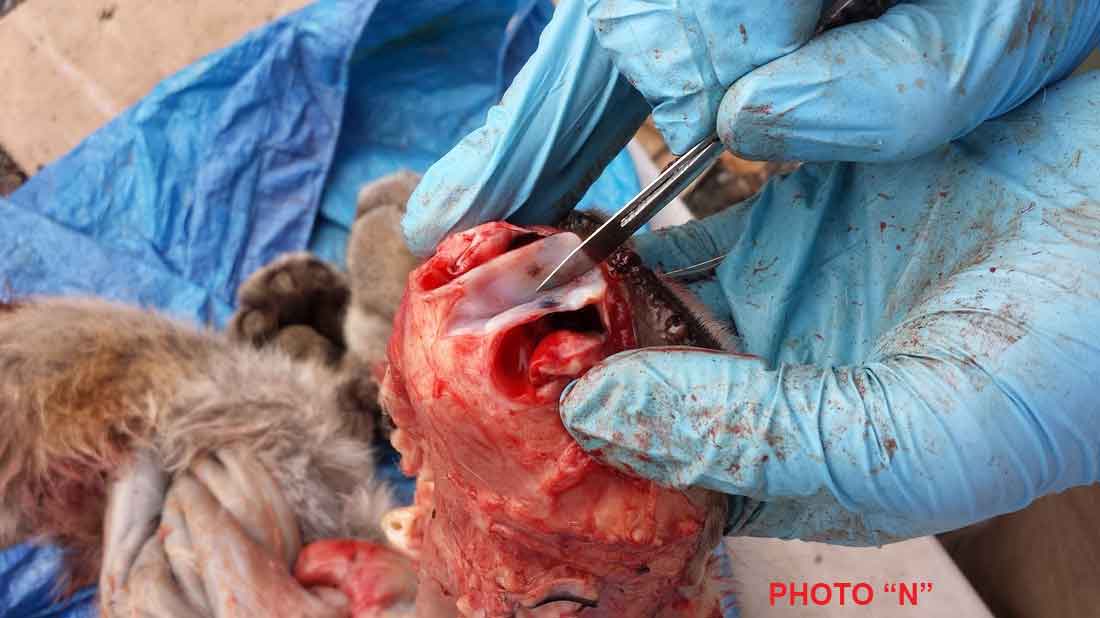
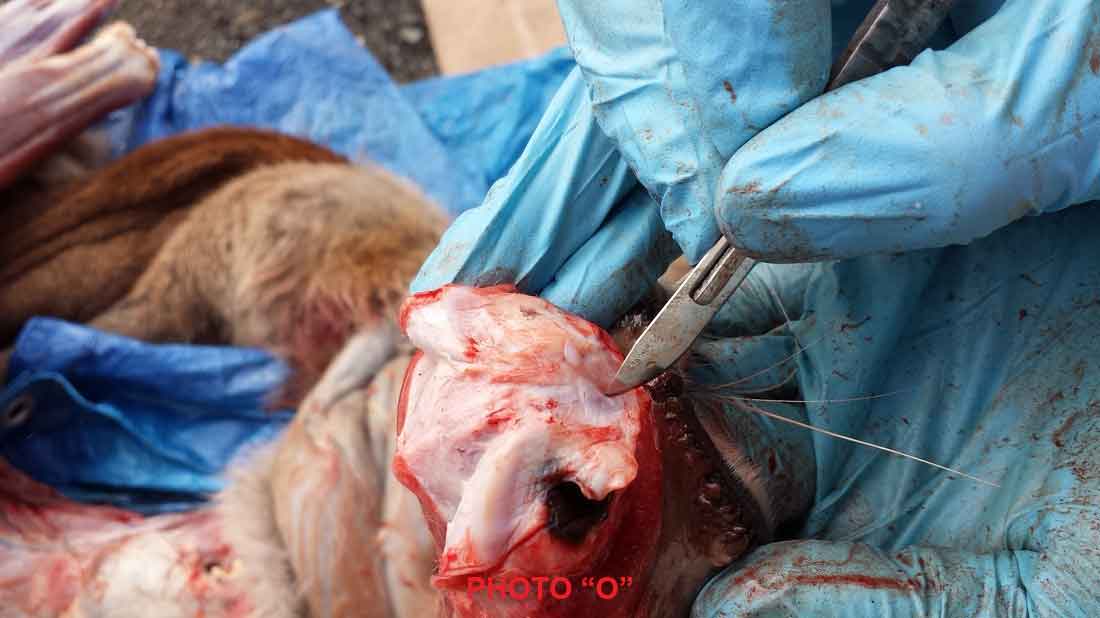
As mentioned above, turning the ears is the most overlooked step I see in the shop. Do not forget or avoid this essential part of the caping process! Start by cutting around the ear butt muscle towards the ear cartilage and then start to turn the ear inside out (P).
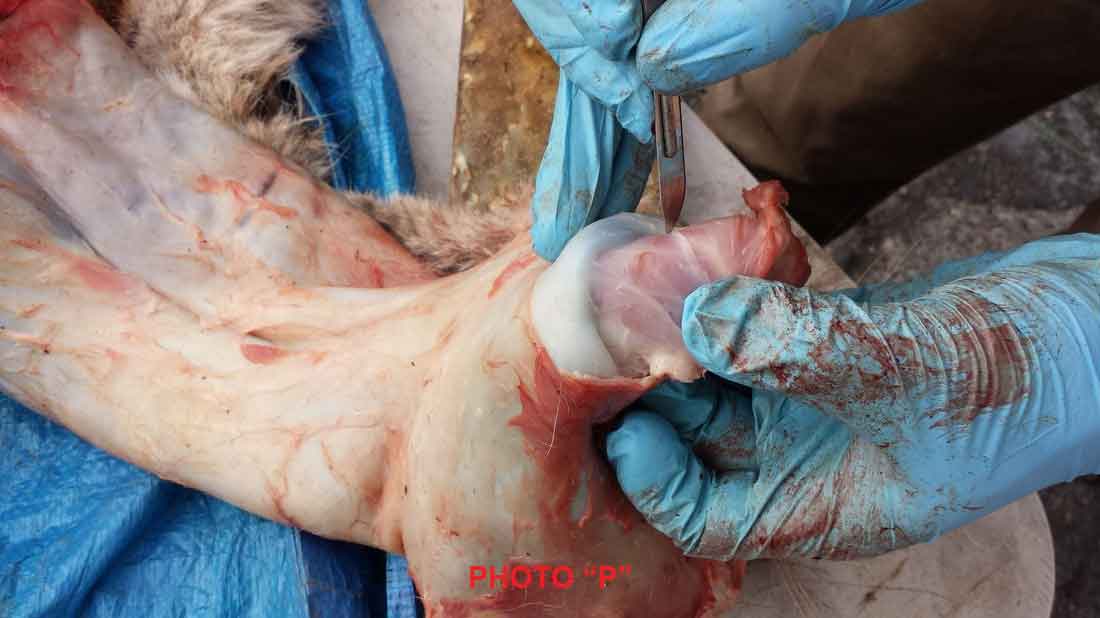
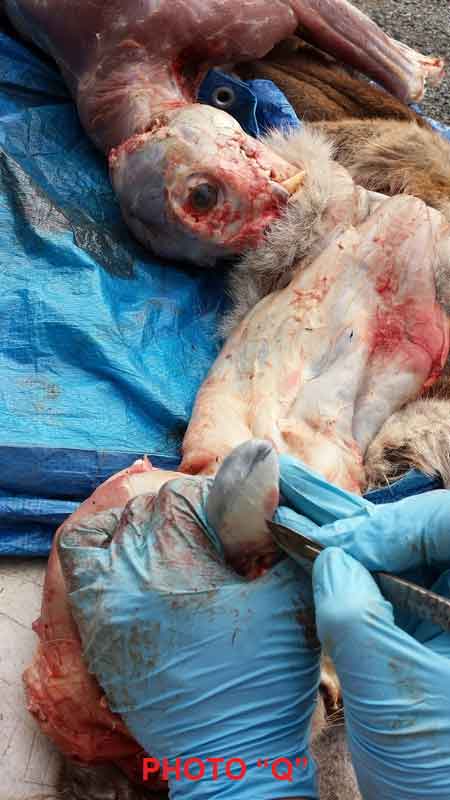
I use a dull wooden edge that I place against the hair side inner ear and use as a pivot point to aid in the turning. Carefully cut the connective tissue that attaches the ear cartilage to the back of the ear. Cut towards the cartilage as you’re less likely to cut through the cartilage than the skin. Continue to work around the ear until you get close to the edges (Q). Continuously check how close you are to the edges of the ear. Remember, a quarter-inch to the edge will allow the salt to do its job and keep you from busting through the ear.
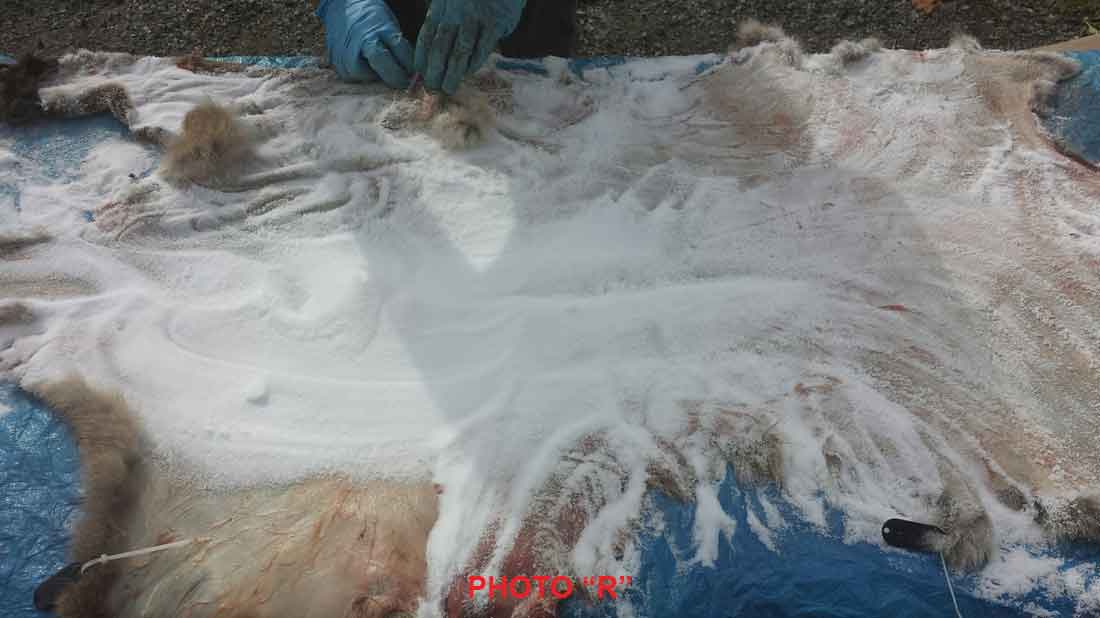
At this point, you have basically finished the skinning portion for a shoulder mount or pedestal mount. Go over your cape and scrape or cut off any remaining meat or fat. Carefully look over the entire hide and check that nothing has been missed. Once you are satisfied that you’ve done a thorough job, take your fine salt and heavily apply it to the cape on the flesh side (R).
Rub it into the hide making sure to not miss any nooks or folds. Take the salt and rub it towards the edges of the cape, capes tend to want to roll in at the edges. I’ve had several capes come in over the years where the edges were missed and spoiled as a result. You want to cover the entire flesh side of the cape. If you’re on a backpack hunt make sure you have enough salt to at least cover the flesh side for one application and do the second application when you get back to base camp. If you are near base camp and have lots of salt with you, apply it heavily. Fold the cape up flesh side to flesh side. The following morning, shake or scrape off the sloppy wet salt and apply another coat. Keep your cape out of the rain. Do your best to keep it as dry as possible. Once the cape has been salted and re-salted, on the third day (if possible) hang it up out of rain or direct sun and let the flesh side “crisp up” and the hair side dry. At this point your hide is good to go. You do not need to worry about getting to a freezer or any other steps to preserve it. Just keep it dry.
For rugs or life-size mounts, things get more involved as you will still need to skin out the feet, tail, and genitals. Ungulates can be a little tricky. You’ll want to cut down towards the hoof and can actually cut through the hoof on the inside of the foot (S). You’ll need to free the bone from the connective tissue within the hoof. Once it is free, cut through the tissue at the joint and pop the bone
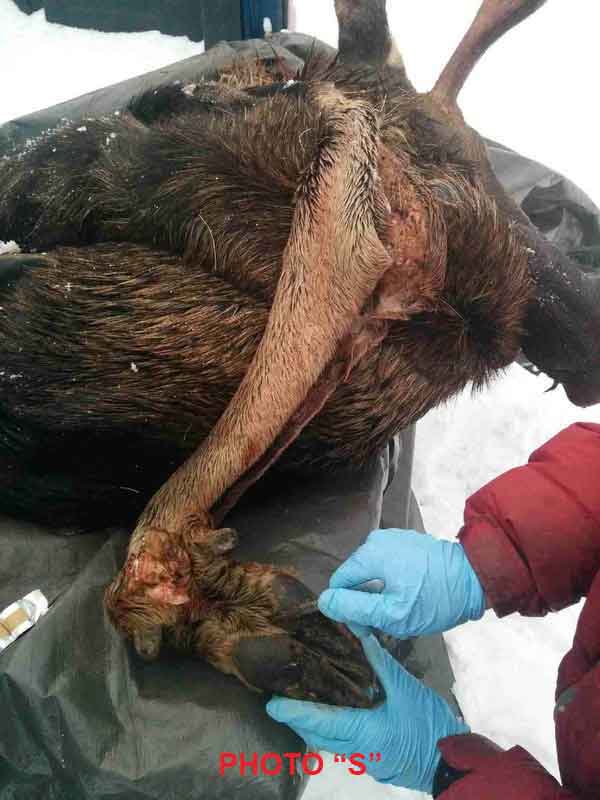
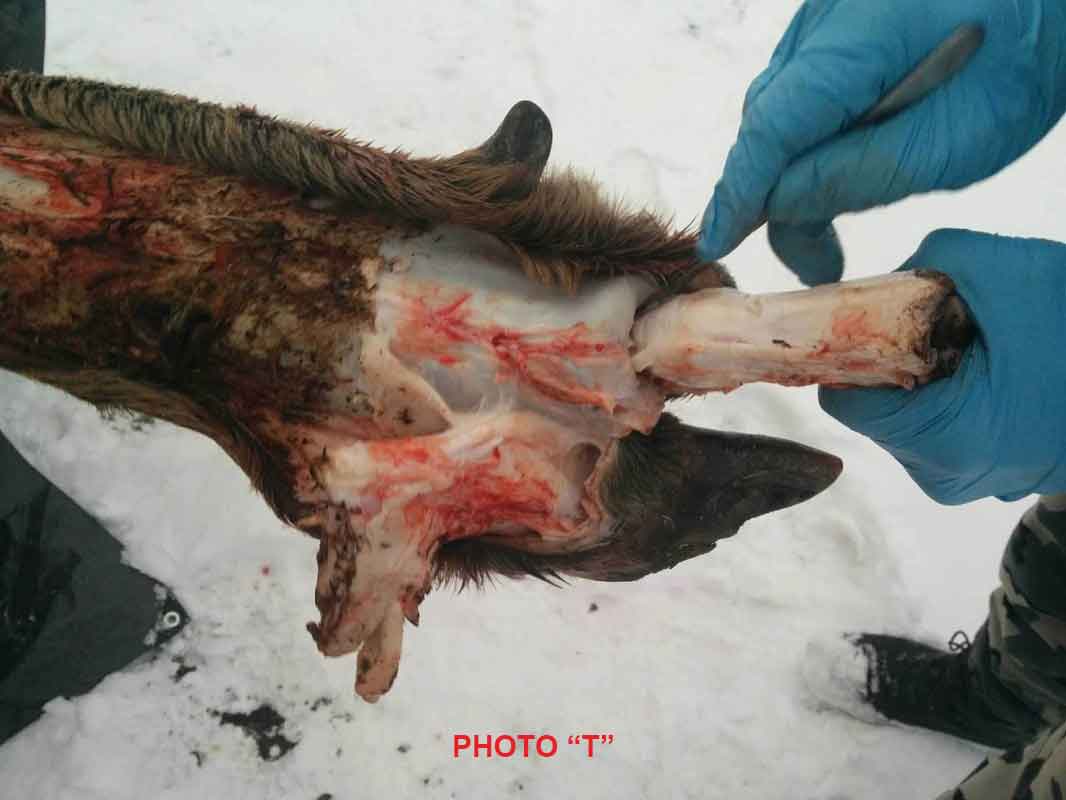
With predators, if the mount is going to be a rug you can cut around the pads and completely remove them from the hide. If a full mount or half-mount is desired, leave the pads attached on one side (of the pad). Make your initial cut where the pad and the hairline meet, cut around the pad leaving a section uncut if you want to keep the pad on or cut it right off for a rug (U).
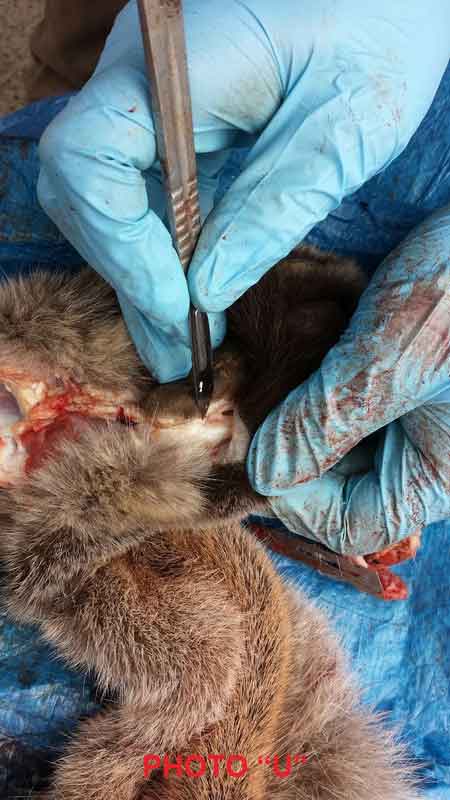
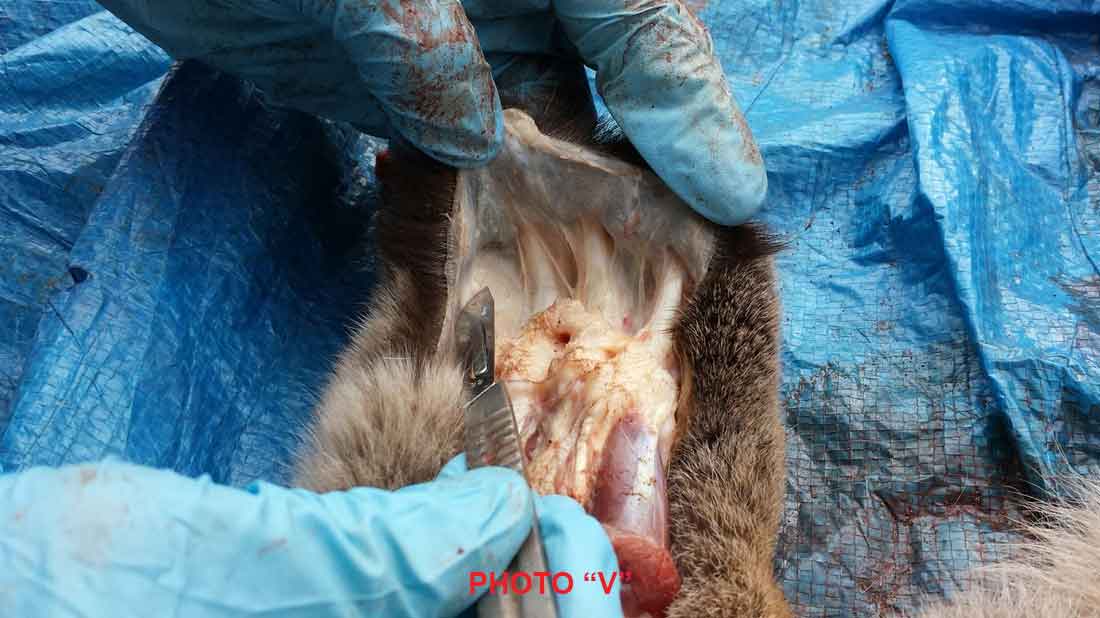
Skin around the foot as you would any other part. When you reach the toes I recommend cutting a trough into the bottom of the foot towards the toe pads until you get to the edge of the webbing (V), then flip the foot over and, while pulling the hide away from the bone cut the tissue on that side. At some point, locate the joint closest to the toe pads and cut through the joint, popping the bones apart one at a time (W). This can be a slow process when you’re not used to doing this.
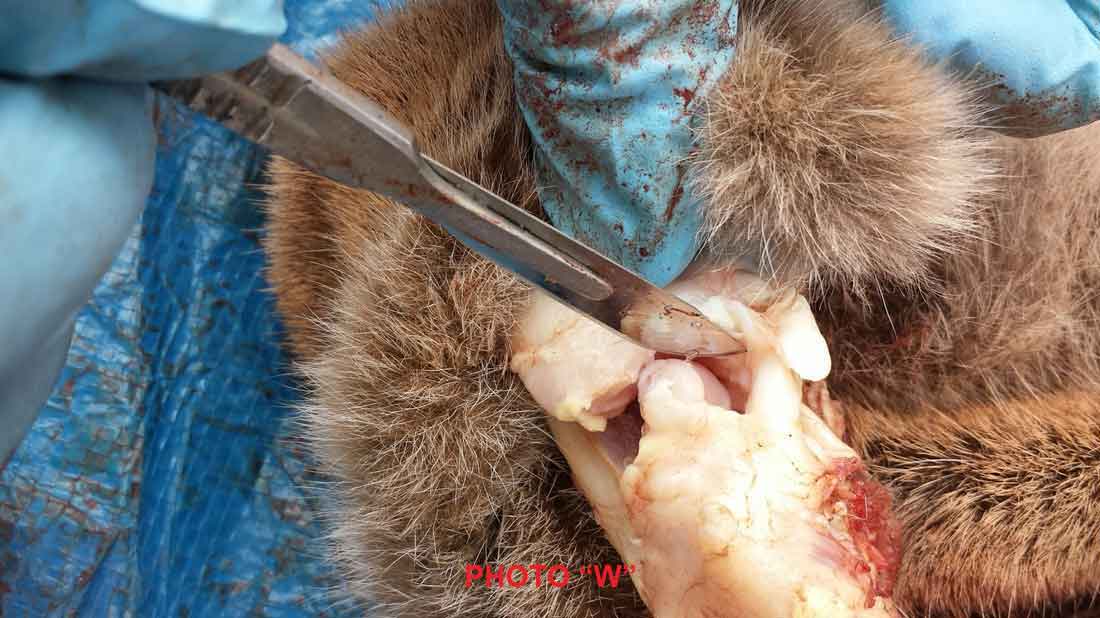
Cut the tail open at the bottom and skin out the tailbone and look for the genitals, and skin them off as well. This is a good habit to get into when skinning the hide of any animal, as many Provinces and States require evidence of sex to be left attached to the carcass.
Certain species will have very thick portions of hide to work through. Large black and grizzly bears can have very thick skin on the back of their necks and mountain goats at times can have very thick hide on their rear ends. If you think the hide is exceptionally thick, it’s a good idea to score or cross hatch cut the hide in these areas to help the salt penetrate. But, do this carefully as you don’t want to cut too deep and sever the hair follicles. After all these steps are complete, follow the same salting steps mentioned above.
Pictures, videos, and articles can be a great reference when skinning for a mount but there is no replacement for good old practice on the real thing. I strongly recommend practicing on another animal you have no intention of mounting and learn from the mistakes we’ve all made. Calling a local taxidermist or the taxidermist you plan on using can be incredibly helpful as well. Find out if they have any preferences so you know ahead of time how to best prepare your cape when in the field. Some taxidermists want the necks to be tubed out, others do not and some refer a dorsally skinned animal for a life-size job, while others prefer it done ventrally. For the record, with shorter haired species I recommend avoiding dorsal skinning. Also, see if the taxidermist will allow you to stop by and watch something being caped.
As with any aspect of hunting, preparation and planning are integral to a successful outcome. Learn everything you can before the trip so that when the time comes and you get the opportunity you’ve been dreaming of and training for, you’ll have the skills required to properly care for the animal and preserve the memory for a lifetime.
About the Author:
Ray Wiens owns and operates Ray Wiens Taxidermy, a full-time studio located in Merritt, BC. Together with his wife, Maureen, they have served customers from all over BC as well as all over the world. He specializes in big game taxidermy and is familiar in mounting all local (BC) species as well as African and other exotic animals.
To Ray, the mounts are so much more than just a trophy of an animal. They are a sign of reverence for the species taken and a means to display the beauty of the animals as well as show the importance of conserving and saving our wild places.
To learn more about Ray and see examples of his fine work go to www.rwtaxidermy.com.
www.journalofmountainhunting.com
